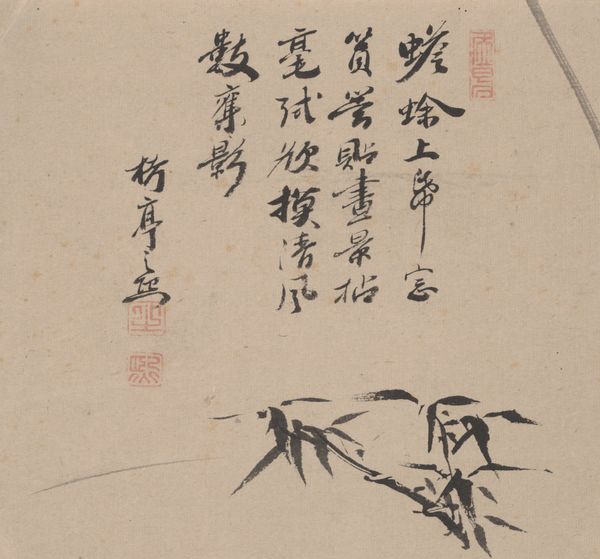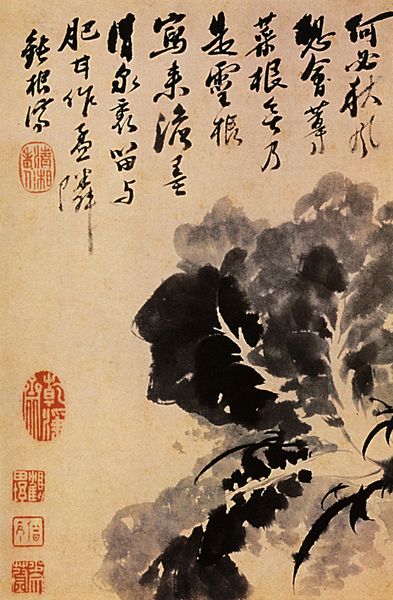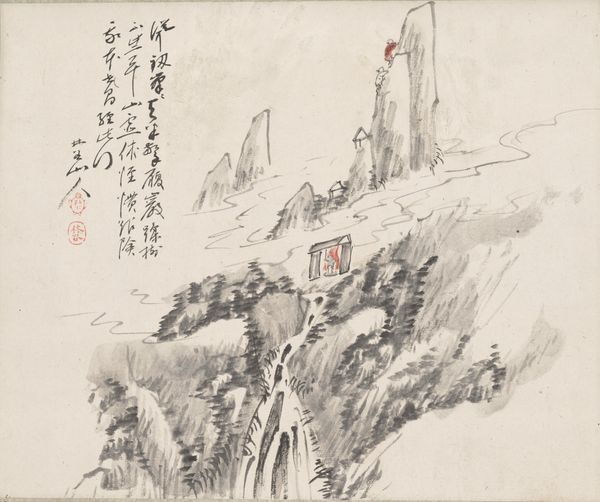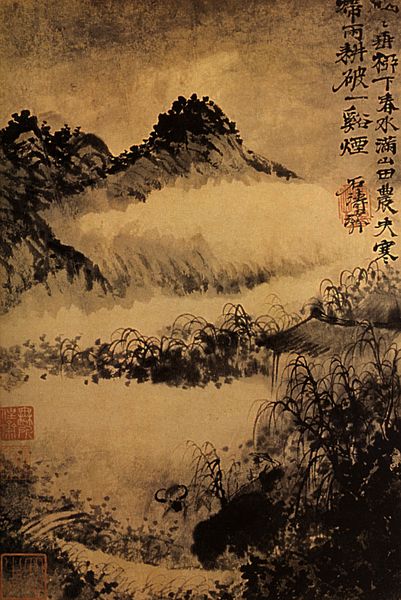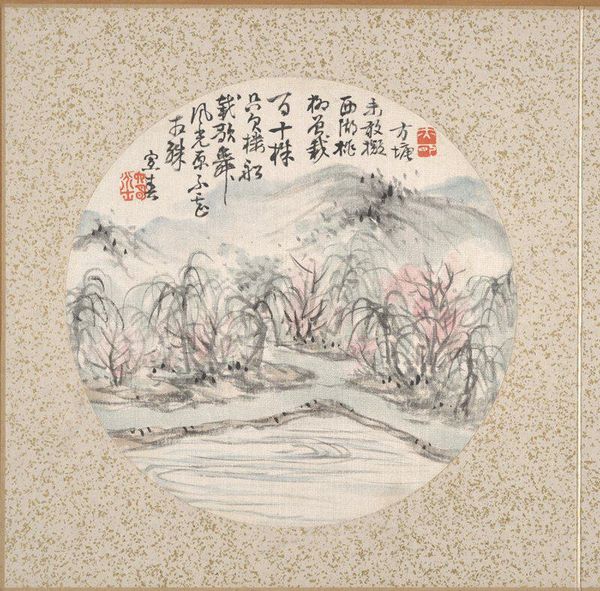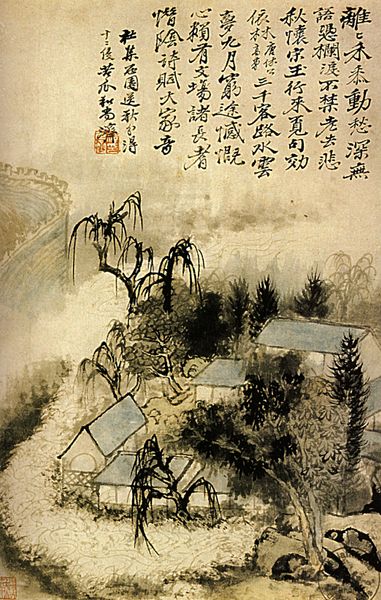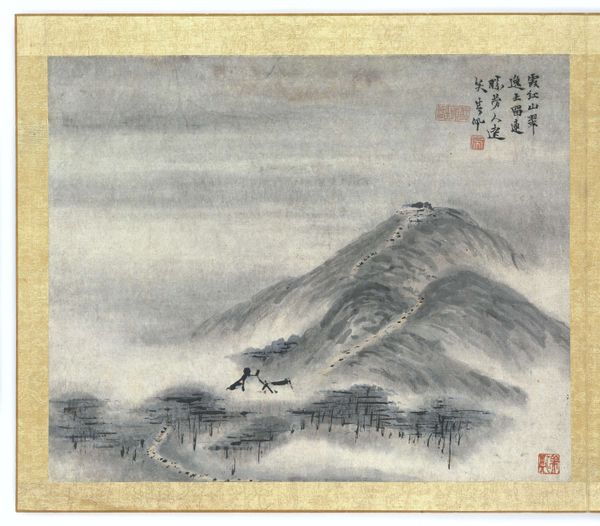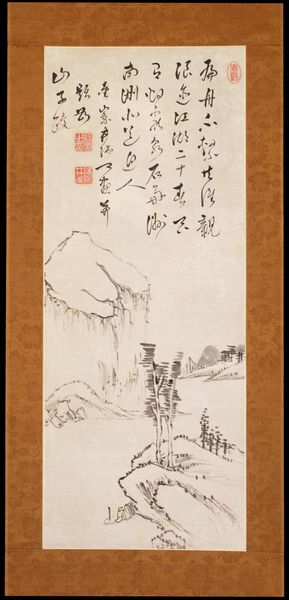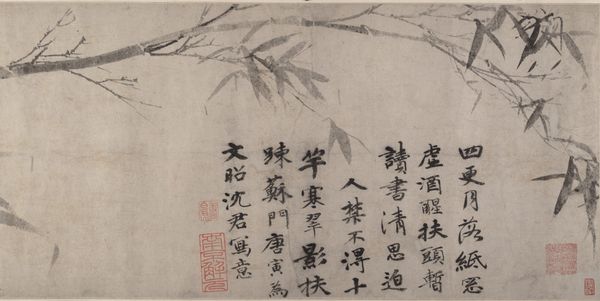
drawing, ink
#
drawing
#
asian-art
#
landscape
#
ink
#
orientalism
#
calligraphy
Dimensions: 28 3/8 × 14 1/2 in. (72.07 × 36.83 cm) (image)62 × 19 1/2 in. (157.48 × 49.53 cm) (mount, without roller)
Copyright: Public Domain
Curator: This is "River and Sky in Evening Snow" by Kaihō Yūshō, created around 1602-1603. Editor: The muted palette immediately struck me; it evokes a sense of tranquility. Curator: Indeed. Yūshō’s monochrome ink wash painting engages with ideas of Zen Buddhism and Daoism, philosophies highly influential in East Asian art. The scene captures a solitary moment, perhaps intended as a visual metaphor for spiritual contemplation and the individual's connection to the vastness of nature. Editor: Observing the application of ink, you can clearly discern how he uses different densities to suggest spatial depth, creating a subtle yet palpable atmosphere. Tell me about his process, if you would. Curator: He belonged to a lineage of artists who frequently challenged social norms and redefined classical themes with new, dynamic techniques. Editor: The choice of ink as a primary material—isn't it fascinating? Inksticks, laboriously ground and mixed, served not only as pigment, but also as a signifier of refined craft and cultural literacy. It seems almost like a meditative process of preparation informing the final form. Curator: Certainly. The artist used carefully controlled brushstrokes—the texture hints at a sense of sparseness but also a subtle, almost hidden strength in the rocks and trees. It may relate to a larger context of rebellion or self-expression. Consider the political climate of Japan at this time and his own position outside of conventional artist networks. Editor: So the act of landscape painting becomes almost like a personal and potentially political declaration through manipulating readily accessible material! I find this element of transforming the common into profound artistry especially compelling. Curator: His personal journey led him from temple life to martial exploits. He channeled these influences into his brushwork. Yūshō presented new possibilities for his artistic milieu. Editor: Reflecting on the way Yūshō blended material and cultural influences in his depiction—from the textures created by ink to historical context, there's much more than first meets the eye. Curator: Precisely! Looking at "River and Sky in Evening Snow," the convergence of aesthetic simplicity and depth becomes apparent, reminding us about the dynamic tension between creation, material and artist expression.
Comments
minneapolisinstituteofart almost 2 years ago
⋮
Snow clings to the leaves of a clump of bamboo and rock. A snowy peak hangs in the distance. This wintry scene formerly functioned as one of eight panels of a folding screen, depicting the so-called “Eight Views of Xiao and Xiang,” a popular theme in East Asian painting and poetry. At right is a Chinese poem brushed by the Zen monk Saishō Jōtai (1548-1608). The poem alludes to the Daoist immortal Han Xiangzi, who predicted correctly that his exiled uncle would become stuck at Indigo Pass, a crossing in the Qin Mountains of central China: Ten thousand miles of river and sky, ten thousand miles of thoughts,a whirlwind of downy flowers scattering in a peaceful grove—The bridges and roads are closed, and my horse’s hooves are slick.Yet again, Indigo Pass is blocked!This is an old poem by Yujian, brushed by Jōtai
Join the conversation
Join millions of artists and users on Artera today and experience the ultimate creative platform.
